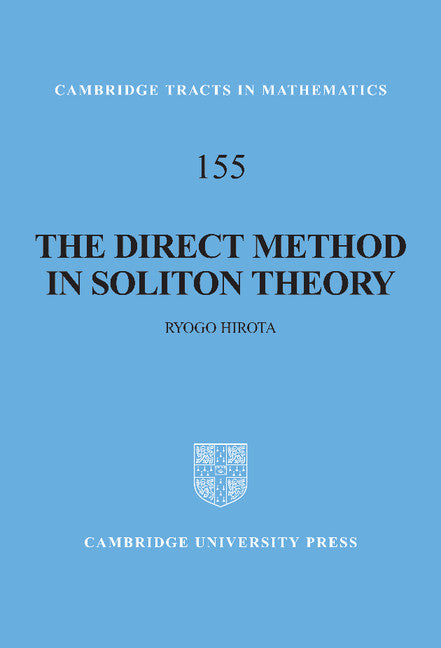Freshly Printed - allow 8 days lead
Couldn't load pickup availability
The Direct Method in Soliton Theory
Account of method of solving soliton equations by the inventor of the method.
Ryogo Hirota (Author), Atsushi Nagai (Edited and translated by), Jon Nimmo (Edited and translated by), Claire Gilson (Edited and translated by)
9780521836609, Cambridge University Press
Hardback, published 22 July 2004
214 pages
22.9 x 15.2 x 1.3 cm, 0.46 kg
' … a nice example of a mathematical writing that can be read at nearly normal pace, which is extremely rare nowadays.' Zentralblatt MATH
The bilinear, or Hirota's direct, method was invented in the early 1970s as an elementary means of constructing soliton solutions that avoided the use of the heavy machinery of the inverse scattering transform and was successfully used to construct the multisoliton solutions of many new equations. In the 1980s the deeper significance of the tools used in this method - Hirota derivatives and the bilinear form - came to be understood as a key ingredient in Sato's theory and the connections with affine Lie algebras. The main part of this book concerns the more modern version of the method in which solutions are expressed in the form of determinants and pfaffians. While maintaining the original philosophy of using relatively simple mathematics, it has, nevertheless, been influenced by the deeper understanding that came out of the work of the Kyoto school. The book will be essential for all those working in soliton theory.
Preface
Foreword
1. Bilinearization of soliton equations
2. Determinants and pfaffians
3. Structure of soliton equations
4. Bäcklund transformations
Afterword
References
Index.


